#Saint John River Gorge
Text






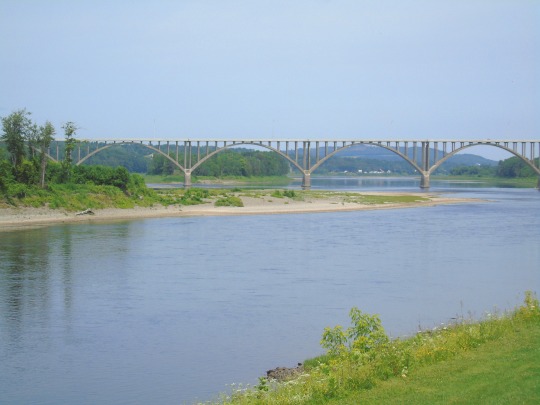

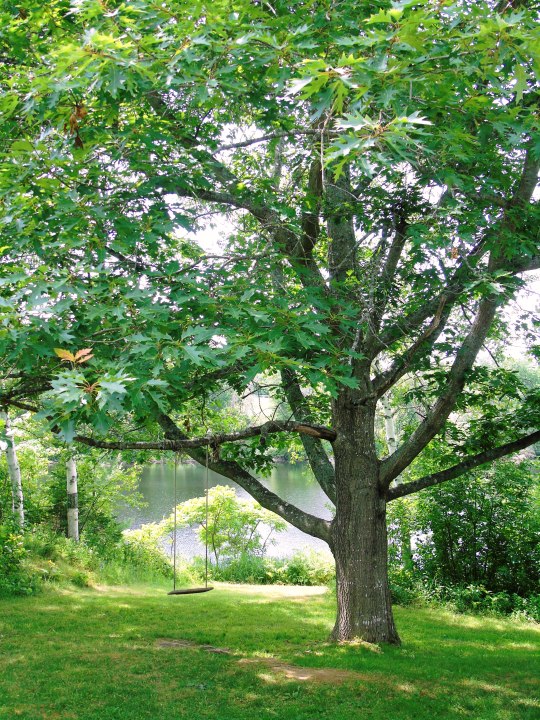


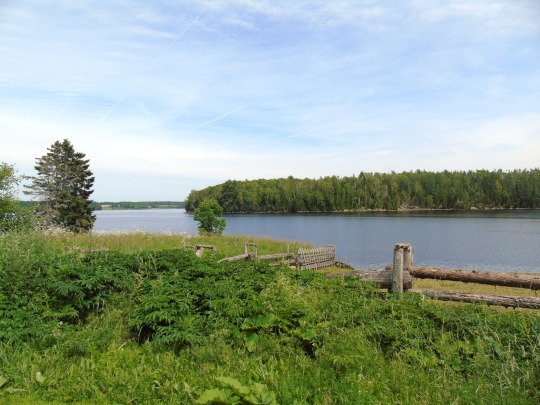
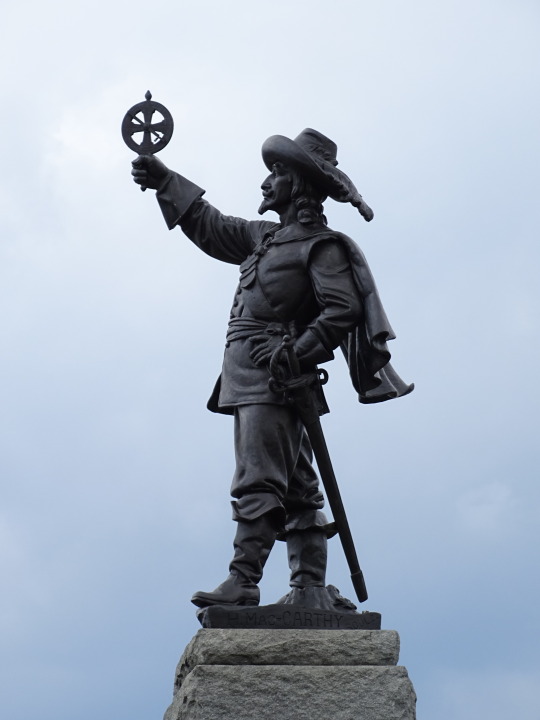

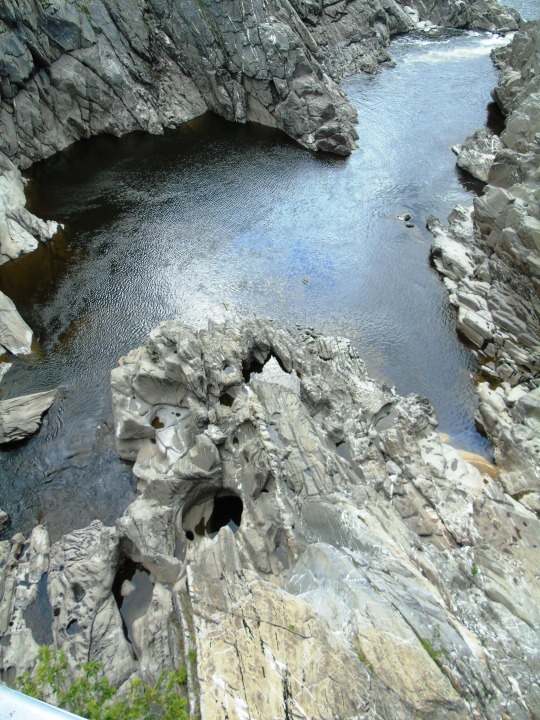






Samuel de Champlain “discovered” the mouth of the Saint John River, site of Reversing Falls and the present day city of Saint John, New Brunswick, on June 24, 1604.
#Samuel de Champlain by Hamilton MacCarthy#Ottawa#Monument Samuel-De Champlain by Paul Chevré and Paul-Alexandre Le Cardonnel#Quebec City#Ontario#Québec#Saint John River Gorge#Grand Falls#New Brunswick#Hugh John Flemming Bridge#Hartland#Hartland Bridge#Kings Landing Historical Settlement#travel#original photography#vacation#tourist attraction#landmark#architecture#landscape#Samuel de Champlain#Saint John River#white colonialism#24 June 1604#anniversary#Canadian history#summer 2015
2 notes
·
View notes
Text
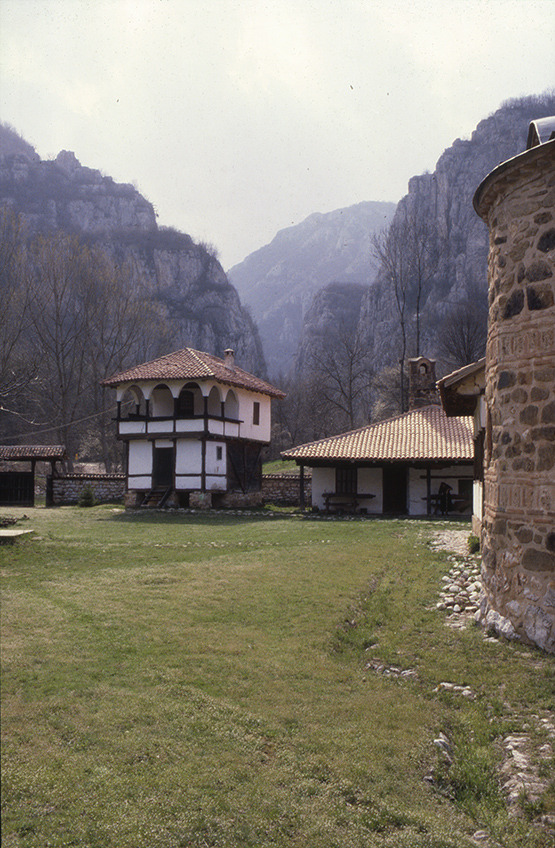
Manastir Svetog Jovana Bogoslova (Monastery of Saint John the Theologian)
Poganovo, Serbia
The monastery is located in eastern Serbia near Pirot in the Jerma River gorge. The church was dedicated to Saint John the Theologian and constructed in the middle 14th century. Its frescoes date from the late 15th century. The konak and čardak are credited by historians as representative of 14th century artisan building techniques and style, but were built in the 19th century. A number of restorations and renovation projects have occurred over the monastery's history. The čardak is the small two storey structure in the center of this view. (photo 1988)
13 notes
·
View notes
Text
New Brunswick, Canada Roadtrip: Saint John, City of Firsts, Oldests, Amazements
Reversing Falls Rapids, one of only two reversing falls in the world, is where the Saint John River runs through a narrow gorge before emptying into the Bay of Fundy. The force of the tide of Fundy Bay – 160 million tons of seawater at high tide – overpowers the river, pushing it backwards. © Karen Rubin/goingplacesfarandnear.com
By Karen Rubin, with Dave E. Leiberman, Laini Miranda & Eric…
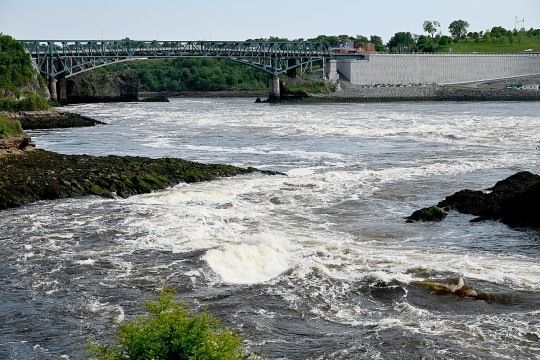
View On WordPress
#Destination Canada#geoparks#New Brunswick Canada#Saint John NB Canada#Saint John New Brunswick#Stonehammer Geopark#Stonehammer UNESCO Global Geopark#Tourism New Brunswick
0 notes
Text
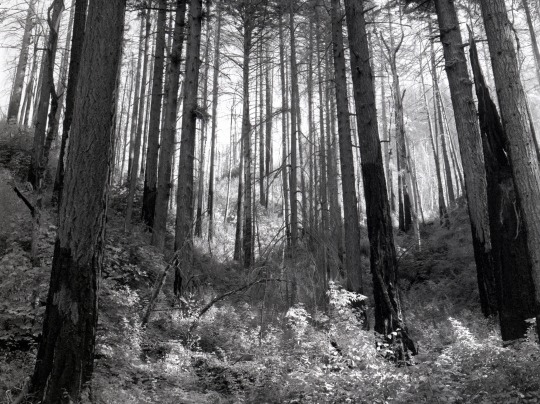
“Along the Toothrock Trail, Columbia Gorge, October 2022.”
©2022 Gary L. Quay
I accidentally exposed this film like it was Rollei RPX 25, so I wasn't sure how it would work out, but it seems to be just fine.
This is along the Toothrock Trail, which is part of the Historic Columbia River Highway State Trail, near the Bonneville Dam. This section of the old road was bypassed in favor of a tunnel in the 1930's, and was left to go back to nature until the state brought it back to life as part of a hiking/biking trail that will go from Troutdale to The Dalles. Parts of it that were kept as roads when the old highway was vivisected to build I-84 in the 1960's are still open for cars. This section was one that was almost destroyed. There is a portion of the 1856 old portage road that went around Cascade Locks that still exists near this spot, but it was closed off after the Eagle Creek Fire in 2017. I tried to access it the day I took this picture, but the path was choked with weeds. I hope it can be saved.
The burn marks you see on the trees are leftover from the 2017 fire.
Camera: Hasselbld 500CM
Lens: 80mm Zeiss Planar
Film: Kodak TMax 400 developed by Blue Moon Camera and Machine in Saint Johns Oregon.
#hasselblad#pacificnorthwest#garyquay#oregon#viewfromhere#film phogoraphy#mediumformat#columbiagorge#toothrock#black and white#landscape photography#hcrh#Historic Columbia River Highway
1 note
·
View note
Photo
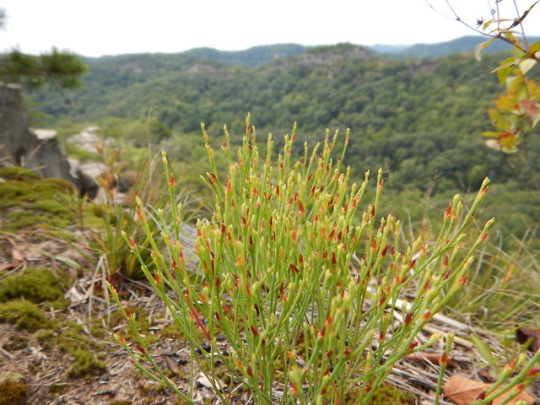
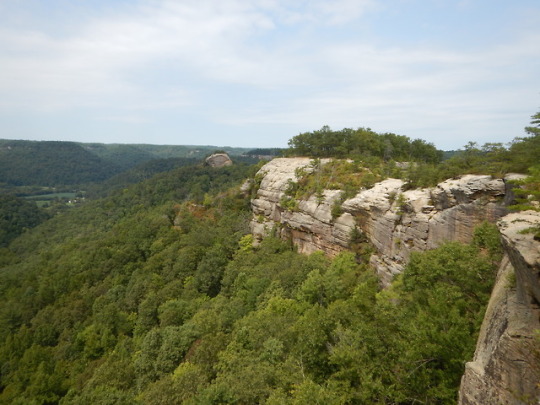
Hypericum gentianoides,
Orange scented pinewood
This was my first time seeing this Saint John’s wort species with it’s classic red capsules, for some reason. It’s a fairly common plant but prefers barron areas to occupy and has flowers that open in direct sunlight. This plant was found with a fairly small cluster of other individuals near Court-House Rock Overlook, Auxier Ridge, Red River Gorge, KY. It’s another inconspicuous common wildflower and definitely one that is easy to overlook; but, if you find one, feel free to give it a smell as it faintly smells of citrus.
#Botany#kentucky#wild flowers#saint johns wort#orange scented pinewood#hypericum#gentianoides#midwest#flora#plants#plant#plantblr#plant geek#nature#wildflowers#wild flower#flower#gentian like#red river gorge#fragrent
3 notes
·
View notes
Text
The Battle of Rivoli
The battle of Rivoli was regarded as one of Bonaparte’s most comprehensive early victories since, during the pursuit that followed the battle, a substantial proportion of the surviving Austrian army was captured. However, at one point the battle itself was “a near run thing” which had the potential to go badly for the French army. Bonaparte had 23000 men under his command whilst the Austrian army under Alvinczi consisted of 28000 men. The Austrians were committed to attack the French since the purpose of the engagement from their perspective was to effect the relief of the Siege of Mantua which had failed on three previous occasions.
As part of a two-pronged advance on Mantua, Alvinczi, in command of one element, advanced down the valley of the river Adige. First contact with Joubert’s small command forced the French to retreat. It was clear to Bonaparte that the main battle to decide the matter would be fought on the Rivoli plateau, the topography of which he was quite familiar. The typically complicated Austrian plan of attack consisted of six columns, which it was hoped would eventually envelop the French. On the left, one column under Vukassovich advanced down the left bank of the Adige. This column only managed to contribute some artillery fire to the battle.
Quasdavonich advanced down the Adige right bank with 9000 men consisting principally of cavalry and artillery. Three columns in the center under Libtay, Koblos and Ocksay advanced over rough mountain roads so had few artillery pieces. The right column under Lusignan was sent on an unsuccessful flanking movement intended to bring them to the French rear which failed to the extent that this force did not make a significant contribution to the battle since it did not arrive in position until the battle was effectively over.
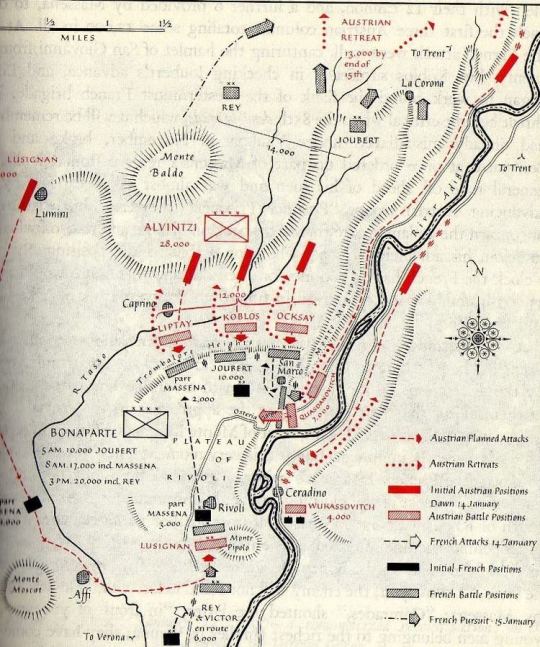
This simple description of the attack illuminates that the Austrians squandered their numerical advantage by breaking up the army into small units enabling them to be dealt with piecemeal by Bonaparte. The Austrian battle plan required each element to achieve its objective without compromise and thus work in concert with every other column effectively to achieve success. However, Bonaparte would have been in a perilous position had the battle gone against him given his retreat would have been blocked by this manoeuvre.
Whilst Austrian forces were advancing onto the plateau at the outset of the battle only Joubert’s 10000 men which were of course heavily outnumbered were in position to oppose the enemy which they did by focusing their fire on the centre columns. Other French columns were moving in towards the engagement and fortunately, Masséna’s division had by this point arrived on the field and its troops began to be incrementally filtered into the line. By 9.00 AM the Austrians had turned the French left flank, but Masséna’s arrival had managed to restore the situation.
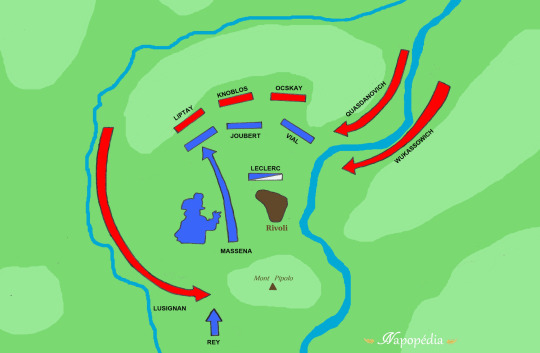
The Austrian column under General Quasdanovich, on the right flank with nine battalions of infantry and thirteen squadrons of cavalry, attempted to climb up from the valley floor of the Adige onto the plateau. This move then threatened the French right and centre so in response this column was raked with cannister from a battery of 15 cannons with devastating effect, followed briskly by an attack by Joubert’s light infantry, which concentrated on Quasdanovich’s right flank. Berthier’s cavalry then launched themselves into a highly effective counter-attack which forced the Austrians to retreat back up the Adige in chaos.
In this charge, Lasalle was first noticed (according to Thoumas whose reference was probably Thiers) for his ardour fighting beside Charles Leclerc. The impact of this charge threw the retreating Austrians into a panic as their escape route necessitated passing through the restriction of a narrow gorge. Fleeing Austrian dragoons collided with their own infantry and soon the gorge was a mass of tightly packed, completely disordered enemy troops with no thought but escape. Upon this wedge the French cavalry fell in fury. With just 26 men of the 22nd Chasseurs à Cheval Lasalle captured, it is said, an entire battalion of infantry and seized five enemy colours. Later in the day Lasalle led another charge, which added to his fame, at the head of a hundred or so hussars against the infantry of the Austrian General Ocksay upon the Trambasore Heights.
[..]
Napoleon in his Memoirs says concerning Berthier’s charge upon Quasdanovich’s column:
“The intrepidity of this charge decided upon success; the enemy was overthrown in the ravine; all that had debouched, infantry, cavalry, artillery, was taken.”
[..]
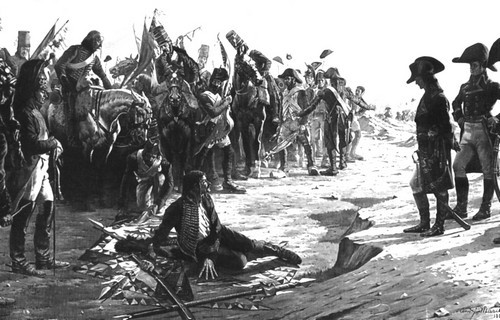
It is said that in the evening, Lasalle, pale and tired, stood before the général en chef beside the flags he had taken from the enemy. Bonaparte reportedly said to him on this occasion:
“Lie down on them, for you have well deserved it”.
Bonaparte had consistently proved his military genius since he had assumed command and by the time of the key victory of the battle of Rivoli, the Austrian army, from a strategic perspective, was all but conclusively beaten. The Austrians had been prevented from relieving the Siege of Mantua and the immediate outcome placed northern Italy in the hands of the French.
A few years afterward, in 1803, at a dinner given in Saint-Omer, the First Consul [..] said in front of all the officers of the division of Bourcier’s Dragoons:
“It is Masséna, Joubert, Lasalle, and I, who have won the battle of Rivoli.”
(General Roguet, Souvenir Militaires, tome 1).
John H. Lewis- Lasalle, the Hussar General.
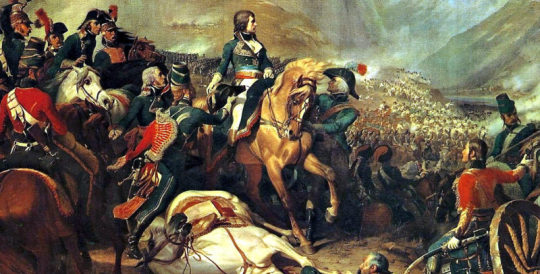
#napoleonic#john h. lewis#lasalle the hussar general#today in history#battle of rivoli#napoléon bonaparte#andré masséna#antoine de lasalle#barthélémy catherine joubert#louis alexandre berthier
22 notes
·
View notes
Photo
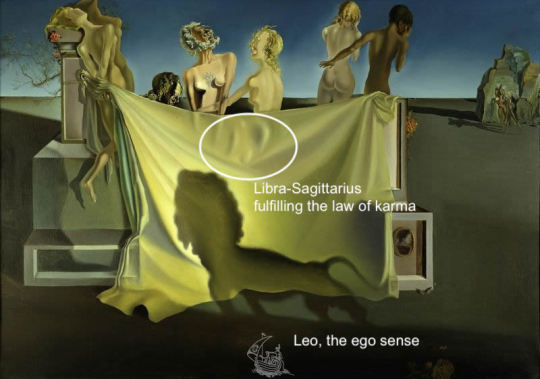
La vieillesse de Guillaume Tell (The Old Age of William Tell) by Salvador Dalí
TELL.
Let go my hand! Thou must away. Thou canst not Remain here undiscovered, and discovered Thou canst not count on succor. Which way, then, Wilt bend thy steps? Where dost thou hope to find A place of rest? DUKE JOHN. Alas! alas! I know not. TELL. Hear, then, what heaven suggested to my heart, Thou must to Italy,—to Saint Peter's city,— There cast thyself at the pope's feet,—confess guilt to him, and ease thy laden soul! … TELL. The road you take lies through the river's gorge, And many a cross proclaims where travellers Have perished 'neath the avalanche's fall. DUKE JOHN. I have no fear for nature's terrors, so I can appease the torments of my soul. TELL. At every cross kneel down and expiate Your crime with burning penitential tears And if you 'scape the perils of the pass, And are not whelmed beneath the drifted snows That from the frozen peaks come sweeping down, You'll reach the bridge that hangs in drizzling spray; Then if it yield not 'neath your heavy guilt, When you have left it safely in your rear, Before you frowns the gloomy Gate of Rocks, Where never sun did shine. Proceed through this, And you will reach a bright and gladsome vale. Yet must you hurry on with hasty steps, For in the haunts of peace you must not linger. DUKE JOHN. Oh, Rudolph, Rudolph, royal grandsire! thus Thy grandson first sets foot within thy realms! TELL. Ascending still you gain the Gotthardt's heights, On which the everlasting lakes repose, That from the streams of heaven itself are fed, There to the German soil you bid farewell; And thence, with rapid course, another stream Leads you to Italy, your promised land.
— Friedrich Schiller, Wilhelm Tell
8 notes
·
View notes
Text
Darkness
by Lord Byron
I had a dream, which was not all a dream.
The bright sun was extinguish’d, and the stars
Did wander darkling in the eternal space,
Rayless, and pathless, and the icy earth
Swung blind and blackening in the moonless air;
Morn came and went–and came, and brought no day,
And men forgot their passions in the dread
Of this their desolation; and all hearts
Were chill’d into a selfish prayer for light:
And they did live by watchfires–and the thrones,
The palaces of crowned kings–the huts,
The habitations of all things which dwell,
Were burnt for beacons; cities were consum’d,
And men were gather’d round their blazing homes
To look once more into each other’s face;
Happy were those who dwelt within the eye
Of the volcanos, and their mountain-torch:
A fearful hope was all the world contain’d;
Forests were set on fire–but hour by hour
They fell and faded–and the crackling trunks
Extinguish’d with a crash–and all was black.
The brows of men by the despairing light
Wore an unearthly aspect, as by fits
The flashes fell upon them; some lay down
And hid their eyes and wept; and some did rest
Their chins upon their clenched hands, and smil’d;
And others hurried to and fro, and fed
Their funeral piles with fuel, and look’d up
With mad disquietude on the dull sky,
The pall of a past world; and then again
With curses cast them down upon the dust,
And gnash’d their teeth and howl’d: the wild birds shriek’d
And, terrified, did flutter on the ground,
And flap their useless wings; the wildest brutes
Came tame and tremulous; and vipers crawl’d
And twin’d themselves among the multitude,
Hissing, but stingless–they were slain for food.
And War, which for a moment was no more,
Did glut himself again: a meal was bought
With blood, and each sate sullenly apart
Gorging himself in gloom: no love was left;
All earth was but one thought–and that was death
Immediate and inglorious; and the pang
Of famine fed upon all entrails–men
Died, and their bones were tombless as their flesh;
The meagre by the meagre were devour’d,
Even dogs assail’d their masters, all save one,
And he was faithful to a corse, and kept
The birds and beasts and famish’d men at bay,
Till hunger clung them, or the dropping dead
Lur’d their lank jaws; himself sought out no food,
But with a piteous and perpetual moan,
And a quick desolate cry, licking the hand
Which answer’d not with a caress–he died.
The crowd was famish’d by degrees; but two
Of an enormous city did survive,
And they were enemies: they met beside
The dying embers of an altar-place
Where had been heap’d a mass of holy things
For an unholy usage; they rak’d up,
And shivering scrap’d with their cold skeleton hands
The feeble ashes, and their feeble breath
Blew for a little life, and made a flame
Which was a mockery; then they lifted up
Their eyes as it grew lighter, and beheld
Each other’s aspects–saw, and shriek’d, and died–
Even of their mutual hideousness they died,
Unknowing who he was upon whose brow
Famine had written Fiend. The world was void,
The populous and the powerful was a lump,
Seasonless, herbless, treeless, manless, lifeless–
A lump of death–a chaos of hard clay.
The rivers, lakes and ocean all stood still,
And nothing stirr’d within their silent depths;
Ships sailorless lay rotting on the sea,
And their masts fell down piecemeal: as they dropp’d
They slept on the abyss without a surge–
The waves were dead; the tides were in their grave,
The moon, their mistress, had expir’d before;
The winds were wither’d in the stagnant air,
And the clouds perish’d; Darkness had no need
Of aid from them–She was the Universe.
Salvador Dali 1951 Christ of Saint John of the Cross, Oil on canvas, Kelvingrove Art Gallery and Museum, Glasgow

#Salvador Dali#Christ of Saint John of the Cross#Dali#Christ#Chritianity#Christian Art#Jesus#Jesus on the Cross#Art#Painting#Fine Arts#Poetry#Poems#Lord Byron#Darkness#I had a dream which was not all a dream#She was the Universe#Byron#George Gordon Byron
80 notes
·
View notes
Photo


I decided to give the Mississippi River gorge some love today on my bike. It was a great 20 mile ride. I even rode on the crappy road on the St. Paul side of the river with a good attitude. Damn, I’m a saint I tell you.
Even though I’m on vacation, we’re treating this like a work Friday evening. I’m getting a wine buzz and Joe (not pictured - sorry Joe!) is drinking Grog. Today was a pretty good day - productive and still restful at times. This compared to the garbage skow that was yesterday. Except for the very inspiring and moving funeral for John Lewis (which I’ve actually thought about a lot today) yesterday was a bust given it was a vacation day. Ah well, they can’t all be great.
Looking forward to a string of 70 degree weather next week - AND I’m still on vacation, AND we’re going to a cabin next weekend, so things look pretty good from this buzzed perspective right now!
21 notes
·
View notes
Photo


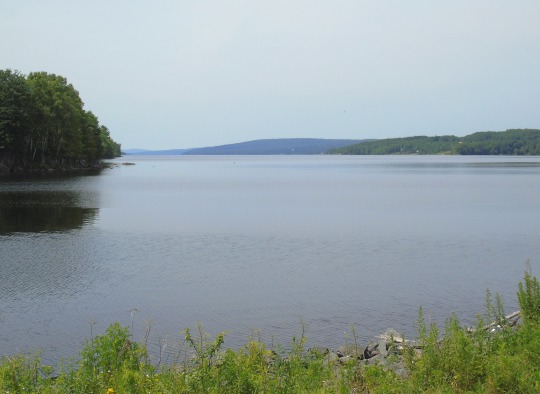

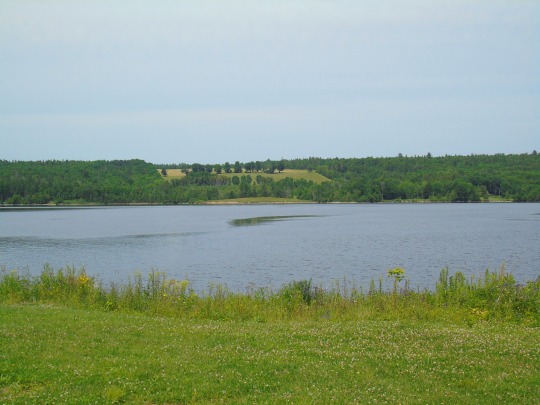
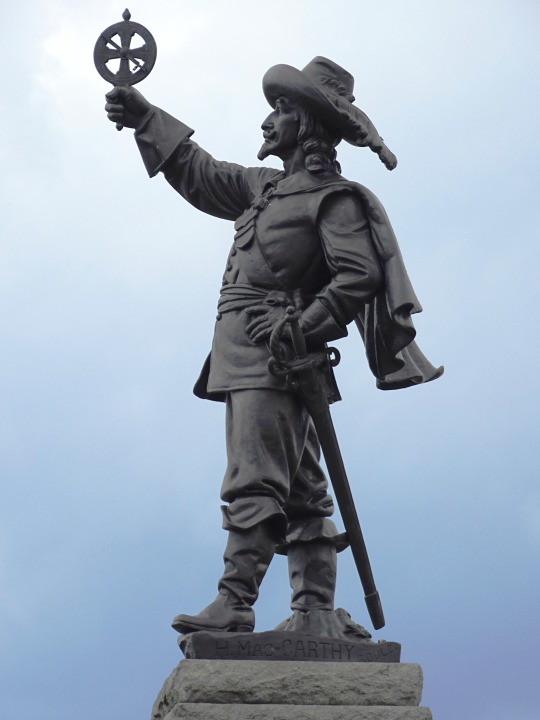
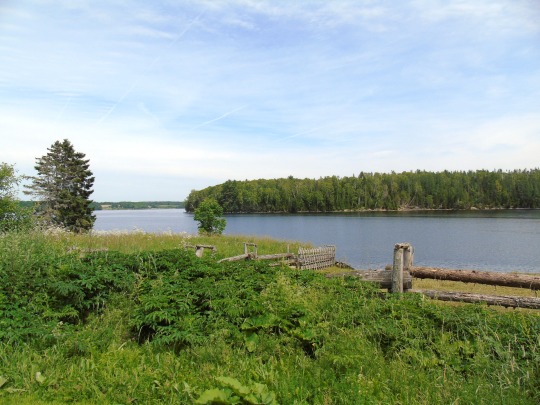


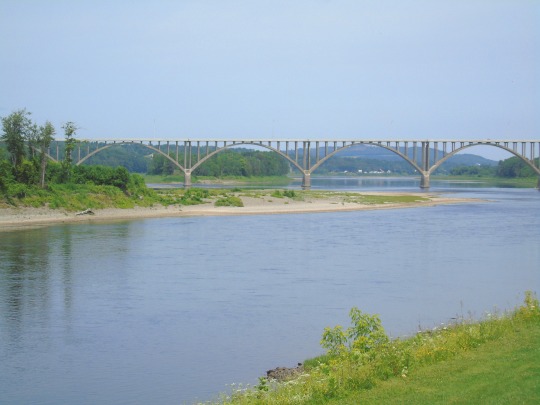
Samuel de Champlain “discovered” the mouth of the Saint John River, site of Reversing Falls and the present day city of Saint John, New Brunswick, on June 24, 1604.
#Saint John River#Hartland#New Brunswick#landscape#countryside#travel#Samuel de Champlain#discovered#24 June 1604#white colonialism#vacation#original photography#summer 2015#2018#Ottawa#Ontario#Canada#tourist attraction#sculpture#Saint John River Gorge#Grand Falls#Hartland Bridge#Kings Landing Historical Settlement#Hugh John Flemming Bridge#Samuel de Champlain by Hamilton MacCarthy#river bank
0 notes
Text
Pilgrims and Painted Churches
Jessica Kingsley of Southwark Cathedral, writes...
Although the central purpose of our pilgrimage from Southwark Cathedral (led by our Dean, Andrew Nunn) was to visit the Painted Churches, it was by no means all we saw. Romania has the unenviable position of being on the direct pathway between Western Europe and the Middle East, and every mile has been fought over since earliest times, perhaps most notably as the contested border between Europe and the Ottoman Empire. Greeks, Romans, Turks, Hungarians, Venetians, Germans from Saxony, and Russians have all left their mark on the culture of different parts of the country, very noticeable in the architecture and worship of the churches we visited, which ranged from the austerity and dignity of the Lutheran, through the wooden transportable churches of Wallachia, to the richness and mystery of the Romanian Orthodox monasteries and churches, covered in frescoes and icons.

We travelled through astonishing countryside - large landscapes of mountains, gorges and rivers, and forests that were still green when we arrived, and bright startling gold and red when we left. One night we were taken by pony and cart to dinner in a farmhouse where there was also a museum of icons, mostly in folk style, painted on glass, an enormous contrast to the Painted Churches.
We visited several of the extraordinary fortified churches - literally churches with high, defendable walls built round them, sometimes with living quarters large enough to house a whole village in time of attack. One day we visited a home for disabled and older people, mostly bedridden, set up and run by a priest with a tiny, mainly voluntary, staff - a reminder that Romania is not a rich country, and that its recent history has not been happy or easy; it was an immensely moving visit.
We had a foretaste of the Painted Churches at Cozia Monastery, where as well as the interior frescoes, the portico on the West side protected our first Last Judgement, and we began to see themes that would come up again and again. But nothing truly can prepare you for the Painted Churches. The large, undulating roof with the very wide eaves that protect the frescoes from rain and snow, the delicacy of the stonework, the towers denoting that they are Royal Churches, but above all the sheer astonishing colour of them, the stillness at their heart, and the truthfulness and faithful depiction of the great central themes of the Christian faith.
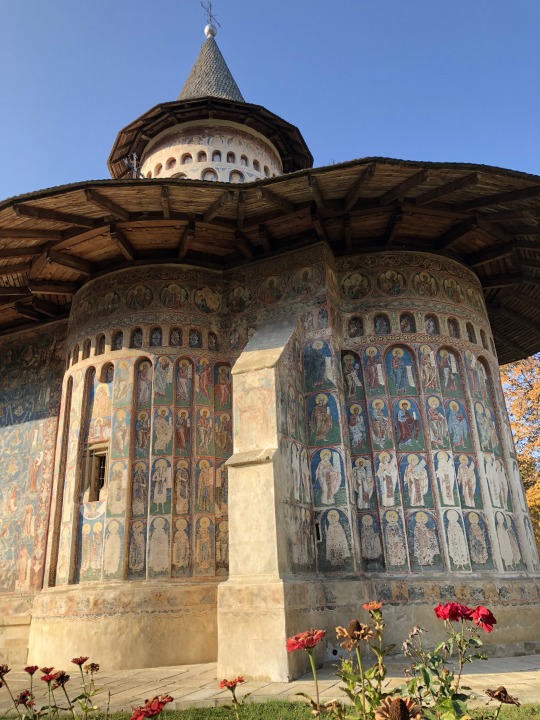
Every inch, inside and out, is covered in images that communicate at intellectual, emotional and sensory levels - in careful order, the prophets, the early theologians (including the Greek philosophers, regarded as forerunners of Christianity), the martyrs, and then enormous set pieces such as the Tree of Jesse and the Last Judgement and also, at the four churches we visited, the Annunciation, consisting of four scenes showing Our Lady moving from shock to acceptance.
Very striking was the constant presence of all orders of angels - cherubim and seraphim right at the top, running round the churches under the eaves and down the columns, the martial angels fighting for mankind in the scenes of the Last Judgement on the West end of the churches, and the Ladder between Heaven and Hell on the North facade at Sucevita; you very quickly begin to feel you are in the presence of the unseen.

Inside, the churches are divided into four sections, and as you enter the first, the Narthex, there is the Church calendar: 366 images, showing the saints for each day, and you can count off the days of each month (starting with September, the start of the Orthodox Church year), up one wall and over your head down the other wall. Next, in the Pronaos the lives of the martyrs are told in often gory detail. The Archangels Michael and Gabriel, stand on either side of the entrance to the Nave, where the life of Christ is told, and often the founder of the church is honoured amongst the great saints, most usually the military saints. In view of the country’s history, we could see why St George and St Demetrios are especially favoured subjects.

An Iconostasis showing the traditional images of Christ, the Virgin Mary, John the Baptist, flanked by the Archangels and surrounded by scenes from the life of Christ, the prophets, and the martyrs, hides the altar from the view of the congregation. The overall impression is almost overwhelming yet the detail and richness captures your attention and transports you to a different world. Although there were many tourists, the churches are still used for worship, and there is a strong sense of continuity and daily practice.
The first of the Painted Churches was built by King Stephen the Great in the 1480s, and the work continued by his son, and the last of the Churches was completed in the early years of the 1600s. There is simply nothing like them, and although harsh winters have stripped much of the decoration from the North sides of the Churches, the rest is in an amazing state of preservation. Visiting these extraordinary places together was a wonderful experience which gave our pilgrimage an unforgettable richness - I think we have all carried this home with us.
1 note
·
View note
Text

POST #25 - N’s “Late” Year in Review, 2019
Y’all for the last three weeks, I’ve written my 2019 Year in Review article in my head over and over again. I’ve thought about my Artist of the Year, Album of the Year, Top 10 Albums, Honorable Mention albums, and albums that I wish I had the time to review. Every time I write it in my head, I sit down to put in writing and all I can think about is “wow, I only started this thing in May.” It’s been 6 months or so and we have over 1,000 followers, we have reached thousands of people and we have written over 20 articles. We have shared even more artists and songs. Y’all think about it. This isn’t about the Hillbilly Hippie Music Review. It’s about how many people have learned about new artists, how many people have listened to songs, went to shows, purchased merch, or went to their local dive bar to see local music. Y’all, here at the Hillbilly Hippie Music Review, we are part of a huge movement to support local, independent and small artists. So, THANK YOU to all the artists that we have shared or mentioned. THANK YOU for making music that we enjoy and staying true to yourselves. And THANK YOU to everyone out there that do the same thing we do. Thank you for supporting music.
With that being said, here is my 2019 Year in Review:
I’ll start with a recap of our articles and posts. If you missed one of these reviews or one of these artists, y’all hit em’ up!
Album Reviews:
* Colton Kise | Colton Kise
* Tyler Childers | Country Squire
* Ian Noe | Between the Country
* Brian Paddock & The American Gentlemen | Love is Weird
* Matt Woods | Natural Disasters
* Ryan Chrys & The Rough Cuts | Western Abyss
* Mickey Lamantia | How Far Would I Fall
* Nick Dittmeier | Companion
* Grayson Jenkins | Cowboy Dream
* Brock Thompson | Sippin’ On a Memory
Show Reviews:
* Donnie Issacs | Kentucky Mountain Moonshine
* Cody Jinks WSG Josh Morningstar | EKU Center for the Arts
* Chris Knight WSG Grayson Jenkins | Zanzabar
Festival Reviews:
* Tumbleweed (Multiple Articles) | LaCygne, Kansas
* Festival of the Red | Red River Gorge, Kentucky
* Master Musicians Festival (Mini Article) | Somerset, Kentucky
* Pickin’ in the Pines (Day 2) | Manchester, Kentucky
Facebook Live Concerts:
* Rye Davis
Social Media Reach/Insights:
* United States
* Kentucky
* Tennessee
* West Virginia
* Ohio
* Kansas
* Alabama
* Indiana
* Minnesota
* Idaho
* Colorado
* Texas
* Rhode Island
* Florida
* Michigan
* Montana
* More…
* United Kingdom
* Canada
* New Zealand
* Spain
* Italy
* Netherlands
Now, as I’m writing this, I’ve got a pretty good buzz on some Bulliet Rye and we are 16 days into 2020. The “New Year feeling” has officially worn off, so I reckon it’s time to give some accolades, honorable mentions, and my personal favorites. So let’s get to it:
Starting with my favorite album that we featured with a review. For me, this is a tie. It honestly depends on how I’m feeling from one day to the next and how that whisky is hittin’ me. So of the Hillbilly Hippie Music Review’s featured albums, my favorite is a tie between “Natural Disasters” (Matt Woods) and “Companion” (Nick Dittmeier). Starting with Matt’s album...This album is raw, real, relatable and entertaining. At one point “The Dream” was my favorite track on this album, but as the holidays came and went, “Cold Civil War” is one of the best songs of 2019. Nick’s 4 song EP is a fantastic collection of ballads. These tracks all have great backstories and make Nick one of my favorite artists in my little circle of music stretching from Tennessee to Indiana on I65 and from Lexington to Louisville on I64.
My favorite show that we reviewed was Chris Knight WSG Grayson Jenkins at Zanzabar in Louisville, KY. It was an awesome little intimate show and the music was solid. The crowd was great and actually listened to the music! However, my favorite show of the year was one I didn’t get the chance to cover. Shane Smith & The Saints WSG Justin Wells at the Basement East in Nashville is the best live performance I have ever seen! Justin always slays the crowd and makes new fans with with passionate and Hercules-isk voice. And Shane Smith and the fellas absolutely blew the roof off of the building y’all. They burnt the place down! Energy, Passionate, Talent, Entertainment, Crowd Engagement, they had it all!
The top Festival that I attended was hands down, Festival of the Red! Chase and Miranda put together one hell of a bill and had a great little set up. Vendors, Food Trucks, Talent, I mean y’all, it was awesome. However, the best part was the late night song swap around the campfire with some of the best up and coming names in the business. Festival of the Red will always have a special place in my heart as they gave me my first media passes and were just awesome! Y’all get your tickets for 2020 and I promise you this festival is gonna get better and better every single year!
By now y’all are probably tired of my ramblin’ so I’ll end this reflection with a 2019 Male Artist (or male led band) of the Year, Female Artist of the Year, Album of the Year, and Top 5 Albums (with Honorable Mentions).
* Male Artist of the Year
* Shane Smith & The Saints
* These guys lost their bus, their instruments and their personal belongings in a fire while on tour. They didn’t miss a beat! They never cancelled a show and they played every show with borrowed instruments! Also a big shout out to the music community for rallying around them with donations, fundraisers, etc. I love this music scene.
* Spoiler Alert, they also released a 3 Chapter album this year in “Hail Mary.” Anddddd it is on my Top 5 albums of 2019.
* Female Artist of the Year
* Kelsey Waldon
* Kelsey’s latest EP “White Noise/White Lines” is one badass EP. Kelsey also signed with John Prine’s label “Oh Boy Records” this year, showing just how good she is.
* Album of the Year
* “Almost Daylight” by Chris Knight
* Knight’s first album since 2012 is a badass album with features from John Prine. Chris picked up right where he left off and we are all thankful for that!
* Top 5 Albums (These may or may not be in order...)
* “Almost Daylight” - Chris Knight
* “Hail Mary” - Shane Smith & The Saints
* “Cheap Silver and Solid Country Gold” - Mike & The Moonpies
* “Natural Disasters” - Matt Woods
* “Country Squire” - Tyler Childers
* Honorable Mentions (in no particular order):
* “We Fall, We Break” - Walter DeBarr
* “Between the Country” - Ian Noe
* “Kind Heart to Follow” - Josh Nolan
* “Sound and Fury” - Sturgill Simpson
* “Seneca” - Charles Wesley Godwin
* “Tryin’ to Be a Blessing” - Dallas Moore
Alright y’all. I need a refill on my whisky and I’m sure you’re tired of my ramblin’ So here’s to 2020 and what it holds for good music and for the Hillbilly Hippie Music Review.
If I get the itch, I may even do a list of albums from 2019 that we haven’t mentioned, but you should really check out!
-Cheers, N.
PS - I want to give a shout to my wife, Lauren, contributing writers Josh, Gerri and Amy, and Rye and Brandy Davis! Without y’all I wouldn’t have started up this page and found a new passion in music! Also, Rye has a new album coming out soon with shows all over the country and Brandy has been playing more songwriting sessions down in Nashville. Y’all be sure to check them out!
*This is an independent review. The Hillbilly Hippie Music Review was not compensated for this review.
*The opinions expressed are solely that of the author(s).
0 notes
Photo
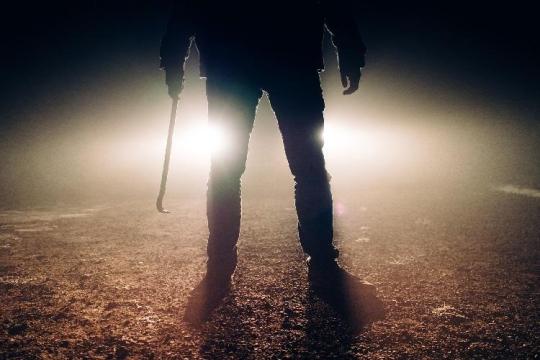
Revenge in Cases of Murder
Servian Villages. Tutelary Saints. Brotherly and Sisterly Affection. Mourning. Remarkable Custom on the Death of a Brother. Institution of “ The Brotherhood Festival of the Garlands. Marriage Ceremonies. Revenge in Cases of Murder not known in Servia. Village Communities. – Substitutes for Churches. Poverty of the Priesthood. Confession. Dependent state of the Monks. Cloisters. National Church. Veneration for Nature. Festival in honour of the Dead. Custom of the Women on St. George’s Eve. Whitsuntide.
The Festival of the Krulize. The IVilis. Festival of St. John. Harvest. Procession of the Dodola, a Form of Invocation for Rain. Custom on the Eve of St. Barbara. Swearing by the Sun and by the Earth. Popular Servian Toast or Sentiment. Remarkable Religious Celebration of Christmas. Belief in Vampyrcs and lfitches. Personality of the Plague. Powerful Influence of the Ifilis. Servian Poetry. National and Heroic Songs. The Guslc. Festival Meetings. Domestic Life of the People.
Songs of Husbandry. Amatory Verse. Celebration of Heroic Exploits. Historical Ballads. Mixture of the True and the Fabulous. National Collection of Songs. Wild Traditions.Deeds of Hunyad.
THE villages of Servia stretch far up into the gorges of the mountains, into the valleys formed by the rivers and streams, or into the depths of the forests. Sometimes, when consisting of forty or fifty houses, they spread over a space as extensive as that occupied by Vienna and its suburbs. The dwellings are isolated, at a distance one from another, and each contains within itself a separate community.
The real house is a room enclosed by loam walls, and covered with the dry bark of the lime, having the hearth in the centre. Around this room chambers are constructed Clijet or AVajat often fitted up with polished boards, but without any fire-places. The house ostensibly belongs to the father and mother of the family; to whose use a separate sleeping-room is sometimes appropriated. The chambers are for the younger married people.
All the members of the family constitute but one household; they work and eat together, and in the winter evenings assemble around the fire. Even when the father dies, his sons, appointing one of their brothers, the best qualified amongst them, as master of the house (Stargeshina), remain together until too great an increase of the family renders a separation desirable. It is not unusual for one house to form an entire street.
0 notes
Photo
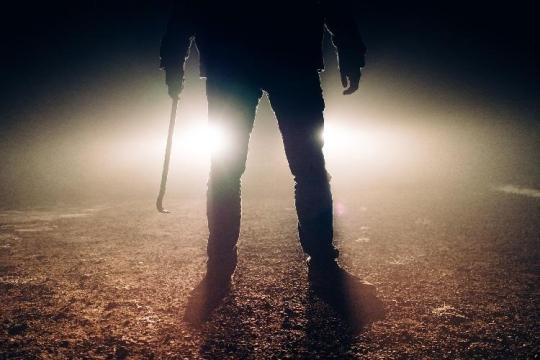
Revenge in Cases of Murder
Servian Villages. Tutelary Saints. Brotherly and Sisterly Affection. Mourning. Remarkable Custom on the Death of a Brother. Institution of “ The Brotherhood Festival of the Garlands. Marriage Ceremonies. Revenge in Cases of Murder not known in Servia. Village Communities. – Substitutes for Churches. Poverty of the Priesthood. Confession. Dependent state of the Monks. Cloisters. National Church. Veneration for Nature. Festival in honour of the Dead. Custom of the Women on St. George’s Eve. Whitsuntide.
The Festival of the Krulize. The IVilis. Festival of St. John. Harvest. Procession of the Dodola, a Form of Invocation for Rain. Custom on the Eve of St. Barbara. Swearing by the Sun and by the Earth. Popular Servian Toast or Sentiment. Remarkable Religious Celebration of Christmas. Belief in Vampyrcs and lfitches. Personality of the Plague. Powerful Influence of the Ifilis. Servian Poetry. National and Heroic Songs. The Guslc. Festival Meetings. Domestic Life of the People.
Songs of Husbandry. Amatory Verse. Celebration of Heroic Exploits. Historical Ballads. Mixture of the True and the Fabulous. National Collection of Songs. Wild Traditions.Deeds of Hunyad.
THE villages of Servia stretch far up into the gorges of the mountains, into the valleys formed by the rivers and streams, or into the depths of the forests. Sometimes, when consisting of forty or fifty houses, they spread over a space as extensive as that occupied by Vienna and its suburbs. The dwellings are isolated, at a distance one from another, and each contains within itself a separate community.
The real house is a room enclosed by loam walls, and covered with the dry bark of the lime, having the hearth in the centre. Around this room chambers are constructed Clijet or AVajat often fitted up with polished boards, but without any fire-places. The house ostensibly belongs to the father and mother of the family; to whose use a separate sleeping-room is sometimes appropriated. The chambers are for the younger married people.
All the members of the family constitute but one household; they work and eat together, and in the winter evenings assemble around the fire. Even when the father dies, his sons, appointing one of their brothers, the best qualified amongst them, as master of the house (Stargeshina), remain together until too great an increase of the family renders a separation desirable. It is not unusual for one house to form an entire street.
0 notes
Photo
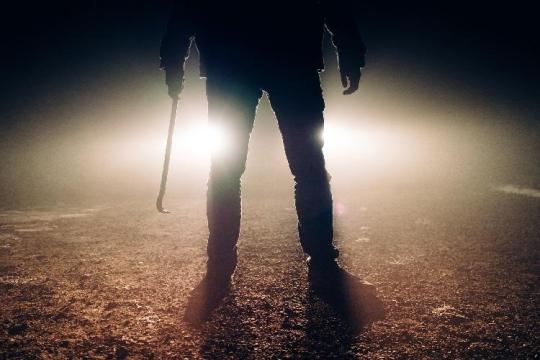
Revenge in Cases of Murder
Servian Villages. Tutelary Saints. Brotherly and Sisterly Affection. Mourning. Remarkable Custom on the Death of a Brother. Institution of “ The Brotherhood Festival of the Garlands. Marriage Ceremonies. Revenge in Cases of Murder not known in Servia. Village Communities. – Substitutes for Churches. Poverty of the Priesthood. Confession. Dependent state of the Monks. Cloisters. National Church. Veneration for Nature. Festival in honour of the Dead. Custom of the Women on St. George’s Eve. Whitsuntide.
The Festival of the Krulize. The IVilis. Festival of St. John. Harvest. Procession of the Dodola, a Form of Invocation for Rain. Custom on the Eve of St. Barbara. Swearing by the Sun and by the Earth. Popular Servian Toast or Sentiment. Remarkable Religious Celebration of Christmas. Belief in Vampyrcs and lfitches. Personality of the Plague. Powerful Influence of the Ifilis. Servian Poetry. National and Heroic Songs. The Guslc. Festival Meetings. Domestic Life of the People.
Songs of Husbandry. Amatory Verse. Celebration of Heroic Exploits. Historical Ballads. Mixture of the True and the Fabulous. National Collection of Songs. Wild Traditions.Deeds of Hunyad.
THE villages of Servia stretch far up into the gorges of the mountains, into the valleys formed by the rivers and streams, or into the depths of the forests. Sometimes, when consisting of forty or fifty houses, they spread over a space as extensive as that occupied by Vienna and its suburbs. The dwellings are isolated, at a distance one from another, and each contains within itself a separate community.
The real house is a room enclosed by loam walls, and covered with the dry bark of the lime, having the hearth in the centre. Around this room chambers are constructed Clijet or AVajat often fitted up with polished boards, but without any fire-places. The house ostensibly belongs to the father and mother of the family; to whose use a separate sleeping-room is sometimes appropriated. The chambers are for the younger married people.
All the members of the family constitute but one household; they work and eat together, and in the winter evenings assemble around the fire. Even when the father dies, his sons, appointing one of their brothers, the best qualified amongst them, as master of the house (Stargeshina), remain together until too great an increase of the family renders a separation desirable. It is not unusual for one house to form an entire street.
0 notes
Photo
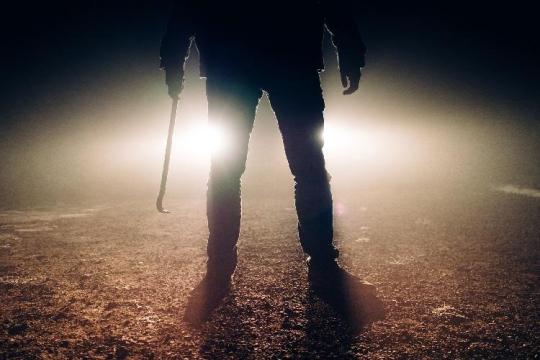
Revenge in Cases of Murder
Servian Villages. Tutelary Saints. Brotherly and Sisterly Affection. Mourning. Remarkable Custom on the Death of a Brother. Institution of “ The Brotherhood Festival of the Garlands. Marriage Ceremonies. Revenge in Cases of Murder not known in Servia. Village Communities. – Substitutes for Churches. Poverty of the Priesthood. Confession. Dependent state of the Monks. Cloisters. National Church. Veneration for Nature. Festival in honour of the Dead. Custom of the Women on St. George’s Eve. Whitsuntide.
The Festival of the Krulize. The IVilis. Festival of St. John. Harvest. Procession of the Dodola, a Form of Invocation for Rain. Custom on the Eve of St. Barbara. Swearing by the Sun and by the Earth. Popular Servian Toast or Sentiment. Remarkable Religious Celebration of Christmas. Belief in Vampyrcs and lfitches. Personality of the Plague. Powerful Influence of the Ifilis. Servian Poetry. National and Heroic Songs. The Guslc. Festival Meetings. Domestic Life of the People.
Songs of Husbandry. Amatory Verse. Celebration of Heroic Exploits. Historical Ballads. Mixture of the True and the Fabulous. National Collection of Songs. Wild Traditions.Deeds of Hunyad.
THE villages of Servia stretch far up into the gorges of the mountains, into the valleys formed by the rivers and streams, or into the depths of the forests. Sometimes, when consisting of forty or fifty houses, they spread over a space as extensive as that occupied by Vienna and its suburbs. The dwellings are isolated, at a distance one from another, and each contains within itself a separate community.
The real house is a room enclosed by loam walls, and covered with the dry bark of the lime, having the hearth in the centre. Around this room chambers are constructed Clijet or AVajat often fitted up with polished boards, but without any fire-places. The house ostensibly belongs to the father and mother of the family; to whose use a separate sleeping-room is sometimes appropriated. The chambers are for the younger married people.
All the members of the family constitute but one household; they work and eat together, and in the winter evenings assemble around the fire. Even when the father dies, his sons, appointing one of their brothers, the best qualified amongst them, as master of the house (Stargeshina), remain together until too great an increase of the family renders a separation desirable. It is not unusual for one house to form an entire street.
0 notes